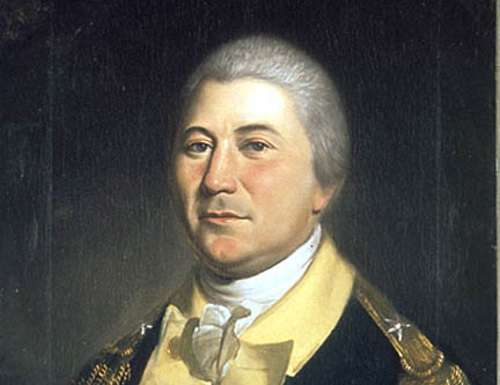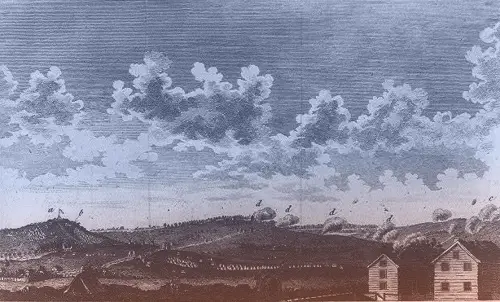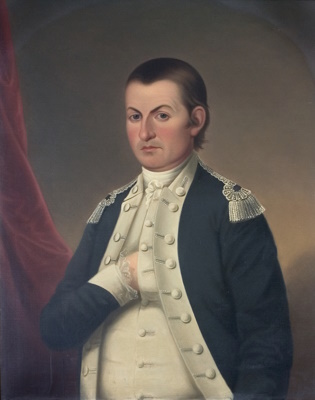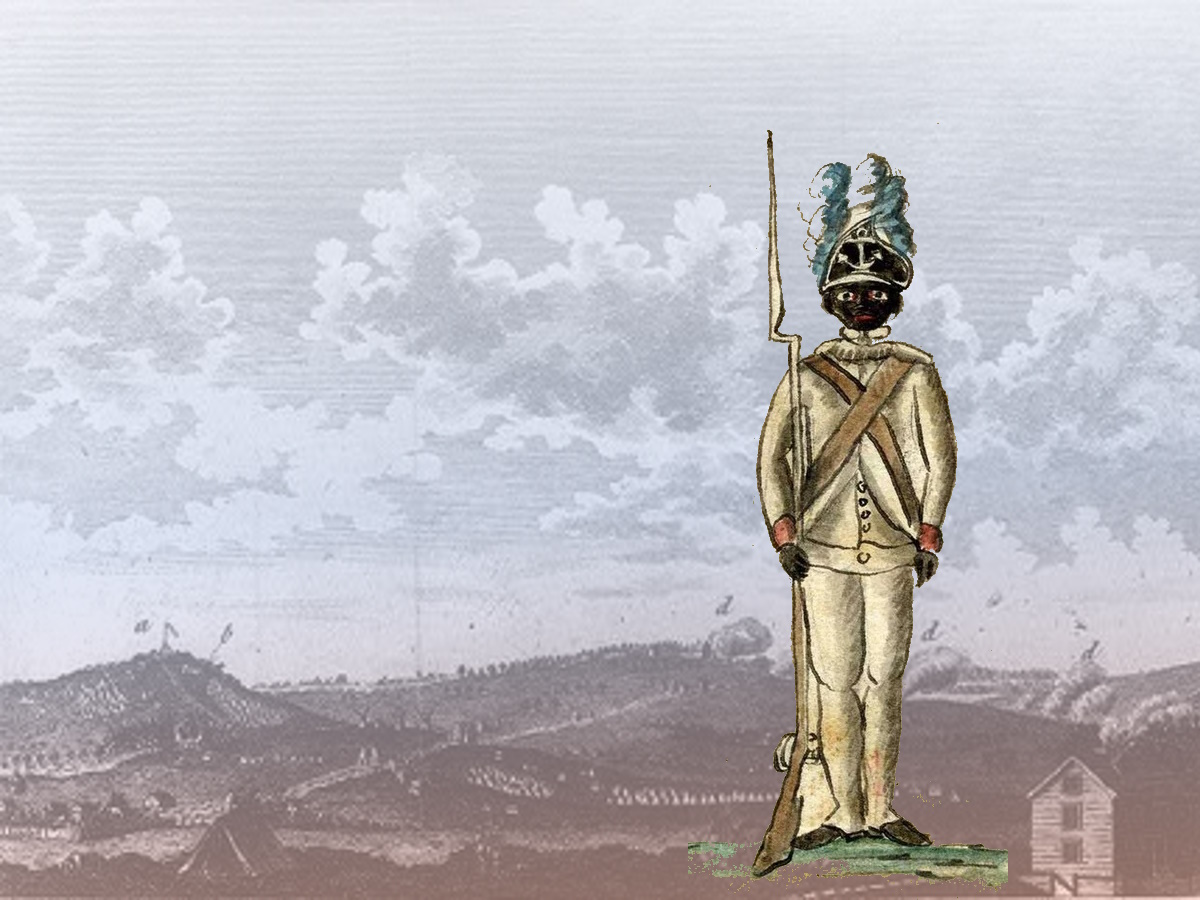In April 1777, 17-year-old William Frank left his home in Johnston, R.I., and enlisted in the Rhode Island State Brigade to fight in the American Revolution. The next month, his 15-year-old brother Benjamin joined the 2nd Rhode Island Regiment in Providence.
They of course risked death, not just by enemy fire but by starvation, disease and fatigue. They would wrap their feet in rags, forage in the woods for food, endure grueling marches, watch their comrades die.
So why did they do it?

They were Black, and they wanted equality. Military service was a way for them to get it. They’d receive food, uniforms, a regular paycheck, land at the end of their service, and a pension – theoretically, at any rate.
This is their story, as told by Ben’s descendant, Prof. Shirley Green, in her new book, Revolutionary Blacks: Discovering the Frank Brothers, Freeborn Men of Color, Soldiers of Independence.
The Frank Brothers
The Frank brothers undoubtedly had little money and few prospects. They’d grown up in a family that was one of 10 free Black families in segregated Johnston. Their father, Rufus, owned no land. He had served in the military during the French and Indian War, first at Fort Stanwix in western New York. Then after the Spanish entered the war, he sailed to Cuba and participated in the siege and capture of Morro Castle on Havana Harbor.
In the summer of 1775, George Washington took command of the Continental Army. It looked as if Ben and William Frank wouldn’t get a chance to follow in their father’s footsteps. The soldiers who fought at Concord and Lexington included Blacks and Natives. But Washington believed he couldn’t recruit and train a professional army with Black soldiers. So he systematically expelled them from the ranks.
Earl of Dunmore
Then Virginia’s former governor made him change his mind.
In the spring of 1775, Virginia Royal Gov. John Murray, Earl of Dunmore, had been run out of the colony by the patriots. He fled to the British warship HMS Fowey in the York River. From there he directed raiding parties against the rebels. Then Dunmore had an idea.

Earl of Dunmore
On Nov. 7, 1775, he issued Dunmore Proclamation, offering freedom to enslaved people who joined the British. As many as 100,000 Black men, women and children fled to British lines—including Harry Washington, enslaved by Washington. Dunmore had special uniforms made for his 800-man Ethiopian Regiment. He had “Liberty to the Slaves” embroidered on the front of them.

Smock similar to the one worn by Lord Dunmore’s Ethiopian Regiment.
Washington responded in January 1776, by letting free Black veterans enlist in the army. Then in January 1777 he allowed all free Blacks to join.
By war’s end, somewhere between 5,000 and 7,000 Black men joined the Continental Army.
The Frank Brothers Join Up
After starting out in the Rhode Island State Brigade, William then enlisted in the integrated 2nd Rhode Island. Ben joined the 2nd Rhode Island as well.
They probably didn’t have shoes, and they may have been unfit for duty because they didn’t have proper clothing. In August 1777, their commander, Col. Israel Angell, described his troops as a “ragged, lousey, naked regiment.”
They survived fierce enemy attacks and the misery of the winter encampment at Valley Force. But perhaps worse than fear, loss and physical suffering, they endured the sting of racism.
The Frank Brothers fought in the Battle of Red Bank, defending Fort Mercer along the Delaware River. Four hundred army and militia soldiers fended off an attack by 1,200 Hessian and British troops while under bombardment by British warships. A few weeks later, though, British warships returned to pound the fort with artillery shells. It worked. They inflicted heavy casualties on the defenders. Of the 400 defending the fort, 250 were wounded or killed after five days. Running low on ammunition, they abandoned the fort to the British.
Valley Forge
The harsh winter at Valley Forge sickened 3,800 men and caused 3,000 to desert. The Frank Brothers stuck it out.

Washington reviews the troops at Valley Forge.
The loss of so many thousands of men at Valley Forge convinced the Congress to pass the Slave Enlistment Act In 1778. It offered immediate freedom to “any Black, mulatto or Indian man slave.” Slaveowners didn’t like the idea of armed Black men, so they pressured Congress to repeal the Act four months later.
But within that four-month window, Col. James Varnum returned to his native Rhode Island to raise an all-Black battalion. Black soldiers from Valley Forge also went to Rhode Island to recruit.

James Mitchell Varnum
One hundred free and enslaved Blacks enlisted in the 1st Rhode Island Regiment under Col. Christopher Greene. Then 70 Blacks and Natives, including the Frank brothers, were transferred from the 2nd Rhode Island to the 1st. The regiments were now segregated.
The Battle of Rhode Island
The regiment then went to Rhode Island as part of the expedition to drive the British from Aquidneck Island. Led by Gen. John Sullivan, they besieged Fort Adams, but couldn’t overcome British resistance. Then British reinforcements arrived, and the Americans had to flee.
On Aug. 29. 1778, the British chased the fleeing American army. The 1st Rhode Island regiment was assigned to protect the right wing of the American line near Durfee’s Hill. With shells flying all around them, they repelled three assaults, allowing the army to escape. The Frank brothers again survived.

The Siege of Rhode Island
For the next year, the 1st Rhode Island patrolled the shore. Ben, now 18, got married to a woman named Sarah Wilbur, who had a son, Abraham.
In March of 1780, a year after his marriage, Ben deserted his regiment and abandoned his wife. Perhaps his marriage failed. Perhaps he could no longer stand the poor food, the vermin, the ragged uniforms and skipped paychecks. Whatever the case, he was far fro the only American soldier to desert. As many as a third of the army may have done so.
Shirley Green, his descendant, believes racism contributed to Ben’s decision to desert. Once the army segregated the 1st Rhode Island, desertions increased 470 percent. Green tracked 53 soldiers of color. Three deserted before the Slave Enlistment Act, while 18 deserted after it.
The Two Frank Brothers
William reenlisted in February 1781. The 1st Rhode Island regiment under Greene was sent to Westchester County, just north of British-occupied New York City. It was theoretically neutral territory. However, a band of Loyalist raiders called De Lancey’s Corps of Refugees waged guerilla war in the area.
A company under Lt. Jeremiah Greenman was ordered to guard Pines Bridge over the Croton River. On May 14, 1781, De Lancey’s Corps of Refugees surprised and overwhelmed the small detachment, killing and capturing many. Then the Loyalists went to the army headquarters, Davenport House, and ambushed Greene, Maj. Ebenezer Flagg and the soldiers stationed there. They killed Flagg and eight Black soldiers. They stabbed Greene multiple times, then tied him to a horse and dragged him for a mile, still alive. Many believe they tortured him to death because he led a Black regiment.

Christopher Greene
William Frank survived the Battle of Pines Bridge, and he went on to serve in Yorktown, which he also survived.
Twelve years after his honorable discharge, William Frank received back pay owed to him. He also received the land bounty promised him when he enlisted. He sold it, moved back to Johnston and raised a family.
Ben Frank
Ben signed up to serve with the British in New York City, the last British stronghold in America. To keep track of Black Americans who took their side, the British kept a list – the Book of Negroes, with 3,000 names. Ben appears in it as Ben Frankham.
By April 1784, Ben had emigrated to Nova Scotia with other Black Loyalists. He lived in Birchtown, the largest free Black settlement in North America. Life was no picnic there. They lived in makeshift huts, endured discrimination and harsh winters and were given the worst land to farm.
Ben got married, again, to Margaret Jackson, the daughter of a Loyalist. They settled in Granville Ferry, N.S., and had nine children. Ben died in 1838.
The Rest of the Story
Shirley Green was born and raised in Toledo, Ohio, but her maternal grandfather was a native of Nova Scotia. Green wanted to know why.
She had her Ph.D. in history and taught at the University of Toledo and Bowling Green State University. So she knew how to go about getting some answers. In a lecture to the Newport Historical Society in the spring of 2024, she explained what she came up with: microshistory.
Microhistory, she said, is when you focus on a person, on an event, on a community, or on a location on a very small level, and you try to tell a bigger story from that. Most microshistorians, she said, start out trying to answer a question or solving a mystery.
She wanted to know how the experiences of her ancestors inform us about the experiences and actions of free Blacks in revolutionary America.
Her book is the culmination of her journey to answer those questions.
Click here to see Dr. Shitley Green’s lecture on the Frank Brothers on The Battle of Rhode Island Association’s youtube channel.
Smock: By JBowie17 – Own work, CC BY-SA 3.0, https://commons.wikimedia.org/w/index.php?curid=35824064.

